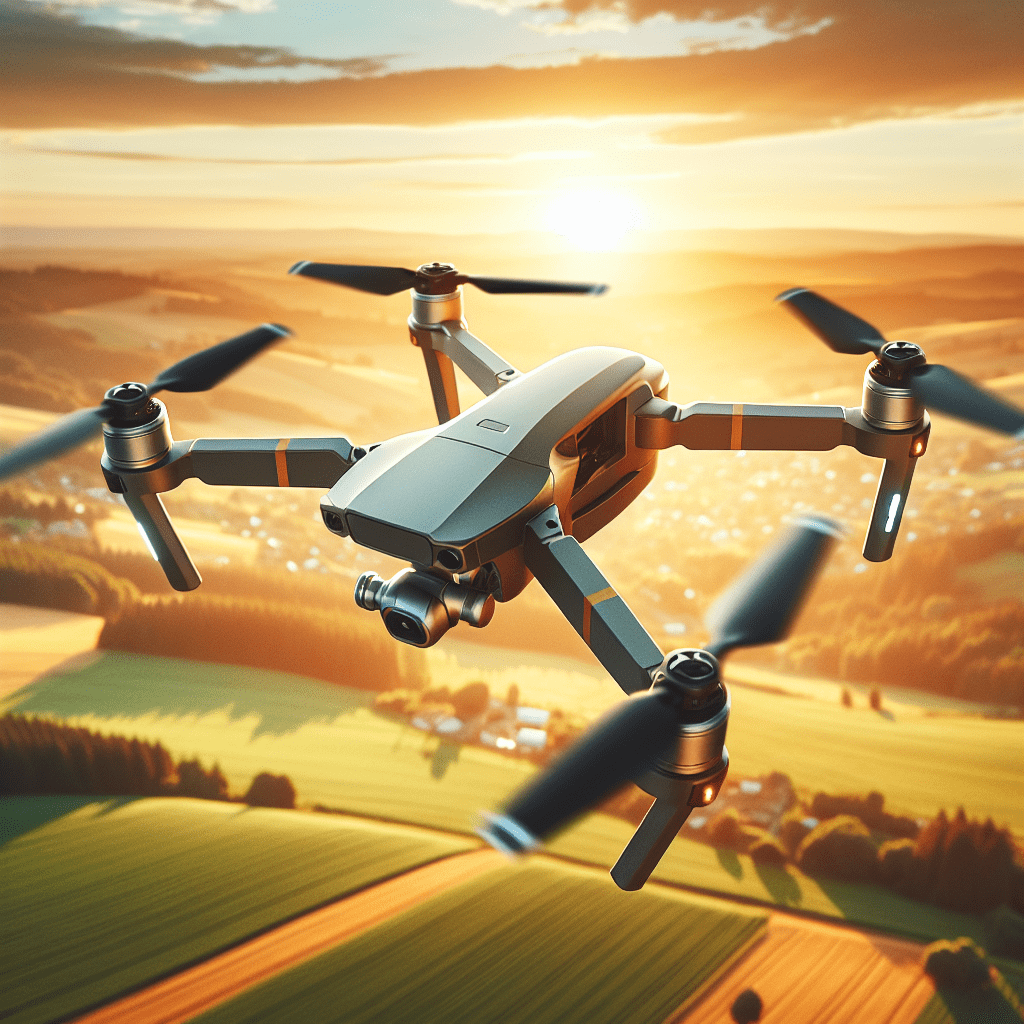Intermediate Drone Upgrades: Why Aero 2 Is the Best Choice
In This Article
- Aero 2 is tailored for intermediate flyers seeking both guidance and challenge.
- Flight assist features and adaptive navigation support progressive skill development.
- It provides a balanced platform of performance, camera excellence, and safety features.
- The Aero 2 outclasses Aero 3 Lite in component compatibility and configurability.
- Battery life, build quality, and flight stability offer true value for its mid-tier price.
- Aero 2 supports continuous learning without overwhelming users with tech complexity.
- Huge user community and third-party support guarantee long-term satisfaction.
- Ideal next step after mastering beginner drones—future-proofs your aerial journey.
- Firmware updates and modular designs extend the drone’s usable life.
- Explore Read a related article for more flight case examples and upgrade tips.
Why Intermediate Flyers Need an Upgrade
The Limitations of Beginner Drones
For most hobbyists, the journey begins with a basic quadcopter — typically a low-cost, entry-level drone offering standard flight times, minimal control options, and essential camera equipment. While excellent for learning the ropes, these beginner drones limit your progression. This is where Intermediate Drone Upgrades come into play.
Entry-level drones often lack the power, responsiveness, and customisability necessary to execute more advanced aerial tasks. Their GPS modules may be elementary or even absent, limiting location awareness and positional accuracy. Additionally, most beginner drones feature basic obstacle avoidance or no obstacle detection whatsoever. This can restrict where and how you fly, especially in complex environments like forests or urban landscapes.
Moreover, many entry-level models cap camera resolutions at 720p or 1080p. While this is perfectly sufficient for casual footage, it falls short when attempting more cinematic or professional-like recording. As a pilot’s ambitions grow, these limitations become increasingly apparent—and ultimately frustrating. Upgrading gives you access to a more agile, stable, and capable aerial platform, unlocking new creative and technical possibilities.

What Sets Aero 2 Apart From Entry-Level Drones
Smarter Flight Controls and Assisted Modes
Unlike basic drones that offer rudimentary stick control, the Aero 2 caters specifically to the intermediate user with refined flight modes and intelligent navigation support. It includes responsive flight assist features such as Return-to-Home (RTH), Follow Me, and Optical Flow Positioning, bridging the gap between beginner handholding and professional manual control. These enhancements mean that Intermediate Drone Upgrades like the Aero 2 provide the freedom to experiment while adding an extra layer of safety.
What truly separates the Aero 2, however, is its AI-driven flight control system. This onboard intelligence interprets pilot intent and environmental inputs, offering real-time corrective actions. Whether you’re performing a complex orbit or flying in gusty conditions, the Aero 2 stabilises itself intuitively. Such control is especially helpful for aspiring aerial videographers looking to capture smooth tracking shots and pan effects without years of RC experience behind the sticks.
“Aero 2 feels like it’s reading my mind. I’m no longer worried about over-correcting or crashing mid-shot—it’s that intuitive.” – Rachelle G., Semi-Pro Videographer
Advanced Safety Features in Aero 2
Safety becomes a more critical concern as your ambitions escalate. Intermediate pilots begin to fly higher, faster, and into more complex environments. Thankfully, the Aero 2 comes equipped with a suite of advanced safety measures designed for pilots who demand more than simplicity. These include fully integrated GPS/GLONASS navigation systems, dual-sensor redundancy, and a comprehensive obstacle avoidance matrix covering all cardinal directions.
In addition, the new Emergency Hover technology ensures the drone will stabilise itself autonomously and hold position if control is lost or a risky manoeuvre is detected. This reduces crash potential and gives pilots peace of mind when pushing their skills to new heights. These features make the Aero 2 not just a viable but a desirable step up for intermediate users exploring more demanding terrain or flight patterns.
The Learning Curve: Skill-Building Made Simple
Transitioning from beginner to intermediate doesn’t have to be daunting. Aero 2 bridges the gap by offering tiered control schemes and scalable difficulty settings. Through intuitive mobile apps, users can customise how much control automation they wish to enable or disable. For example, learners can begin by using basic autopilot modes and gradually reduce system dependency as their confidence builds.
Moreover, Aero 2 includes interactive tutorials and in-flight coaching, catering directly to progression-minded users. It logs each flight and offers feedback on manoeuvres, flight efficiency, and navigation smoothness. This data is invaluable for learning precision flying and correcting habits before they become entrenched. Such built-in mentorship tools make the Aero 2 an outstanding vehicle for continuous learning, justifying its status as a leading choice for Intermediate Drone Upgrades.
Aero 2 vs Aero 3 Lite: Which One Fits You Best?
At first glance, it may seem the latest model—Aero 3 Lite—would be superior. Yet, for many intermediate pilots, Aero 2 proves to be both the smarter and more economical option. The Aero 3 Lite does introduce newer firmware and slightly improved aerodynamics, but also strips back on certain features, potentially underwhelming for users looking for advanced autonomy or camera configurations.
In contrast, the Aero 2 includes a 4K gimbal-stabilised camera, greater compatibility with third-party controllers, and more refined waypoint navigation. Additionally, it’s compatible with existing battery modules and accessories—making upgrades seamless and cost-effective. Users focused on reliability, consistency, and feature depth—rather than trend-chasing—will definitely find the Aero 2 a superior intermediate platform.
Battery Life and Flight Performance Upgrades
Improved battery life is a standout specification within any list of Intermediate Drone Upgrades. The Aero 2 boasts a solid 34-minute flight time under standard payload conditions. This is a significant leap from the typical 15–20 minutes offered by beginner models. Additionally, the intelligent battery management system monitors real-time consumption and recalibrates energy output during traction-heavy manoeuvres such as ascents or turns.
The high-efficiency motors and aerodynamic shell contribute to smoother, wind-resistant flights. This results in greater range, stability in breezy conditions, and a more controlled navigation experience even at higher altitudes. It’s not just about flying for longer—Aero 2 lets you fly with purpose and efficacy. Combined, these enhancements transform flight planning from a rushed act to a well-thought-out process, also reducing recharge downtime during excursions.
Real User Feedback: The Transition Experience
A growing number of drone users report their transition to Aero 2 as not just smooth but revelatory. From hobbyist vloggers to conservation surveyors, real-world users praise how Aero 2 sharpens their aerial capability without overwhelming them technically. Many cite a dramatic decrease in error rates during flights, smoother footage acquisition, and a sense of growing mastery within weeks—not months—of consistent use.
One frequent comment from the community is how Aero 2 improves both confidence and creativity. Beginners can focus on composition and storytelling rather than wrestling with twitchy joysticks or worrying about mid-air surprises. These testimonials highlight something critical about Intermediate Drone Upgrades: they must equip users to grow naturally while still offering enough forward headroom technologically. Aero 2 delivers on both accounts.
For more tips from Aero 2 users and real aerial projects powered by it, check out Learn more about Drone Collection & Buying Guides for in-depth case studies.
Drone Navigation That Adapts to Intermediate Needs
Perhaps one of the most underappreciated features of the Aero 2 is its adaptive navigation system. Unlike static pathing programmed on many drones, the Aero 2 dynamically reroutes around emerging obstacles and adjusts elevation during missions. It also offers terrain-following, allowing the drone to maintain a consistent altitude above ground even on uneven or mountainous landscapes.
This kind of real-time computing is essential for intermediate flyers performing missions beyond line-of-sight or in semi-autonomous modes. Whether you are mapping out agricultural fields or documenting city roof inspections, the drone’s environmental reaction time and course correction abilities continue to impress. In a nutshell, Aero 2 understands where it is—and where you’re taking it.
Price vs. Value: Aero 2’s True ROI
Affordability is central to the decision-making process for any drone upgrade. The Aero 2 hits the sweet spot between functionality and cost-effectiveness. While it does carry a higher price tag than beginner models, it remains significantly more affordable than premium pro drones that may feature tech you’re not ready to harness yet. More importantly, the Aero 2 avoids planned obsolescence through its firmware update cycle and modular component design.
You’re not just purchasing a drone; you’re investing in a platform. Its capabilities scale with your skill level, reducing the need to re-invest six months down the line. Maintenance is straightforward, and spare parts are widely available. Additionally, the Aero 2 is supported by an expansive user base and online community, further enriching its operational ecosystem. For suggestions on where to purchase Aero 2 at the best price, consider visiting Read community reviews and discussions about drone upgrades.
Final Verdict: Should You Upgrade to Aero 2?
[CONCLUSION_CONTENT]
Great guide on why-aero-2-is-the-smartest-upgrade-for-intermediate-flyers – Community Feedback
What makes the Aero 2 ideal for intermediate flyers?
Aero 2 combines easy controls from beginner drones with advanced features like improved navigation and smarter safety, helping pilots build their skills before moving to pro gear.
How does Aero 2 differ from entry-level drones?
Unlike beginner models, Aero 2 offers user-friendly intelligent flight modes, better flight stability, and more robust safety systems, making it perfect for growing flyer confidence.
Is Aero 2 suitable for those upgrading from a basic drone?
Yes, Aero 2 is specifically designed to bridge the gap between basic and professional models, giving an easy yet feature-rich upgrade path.

